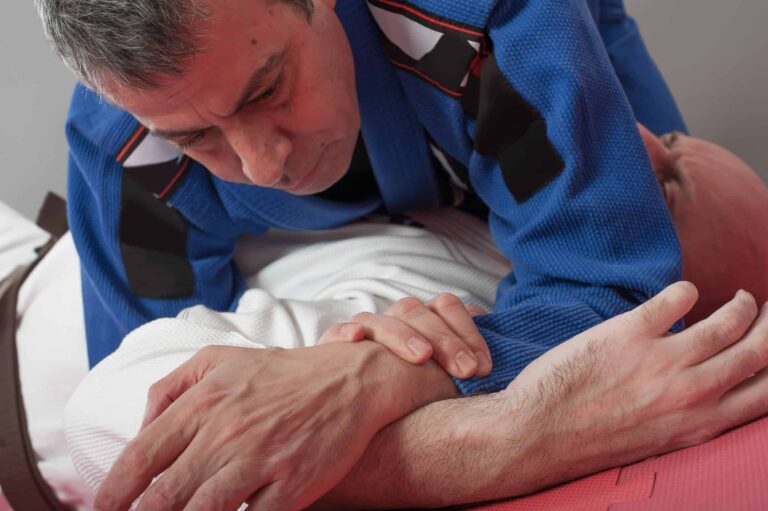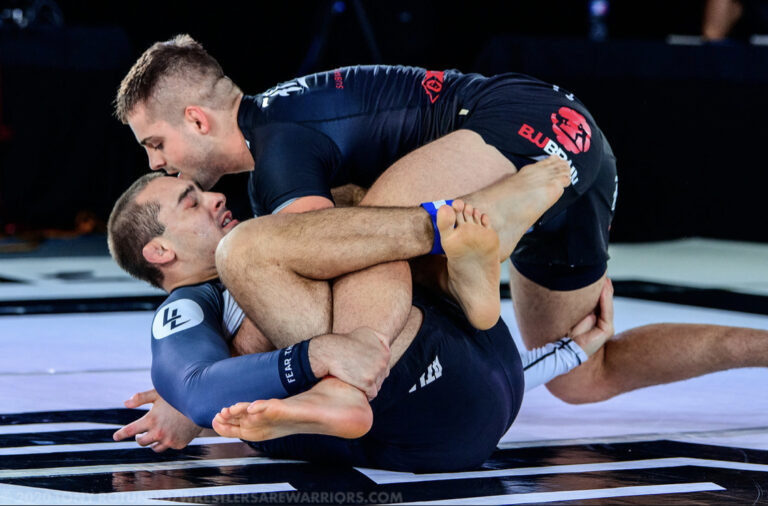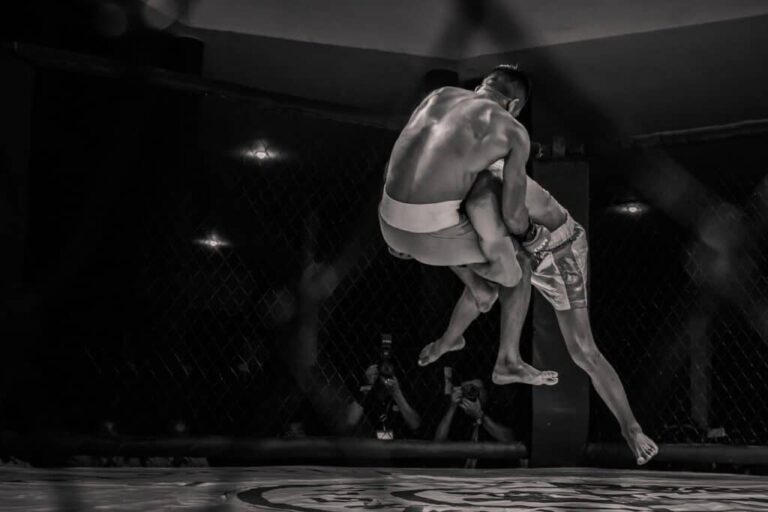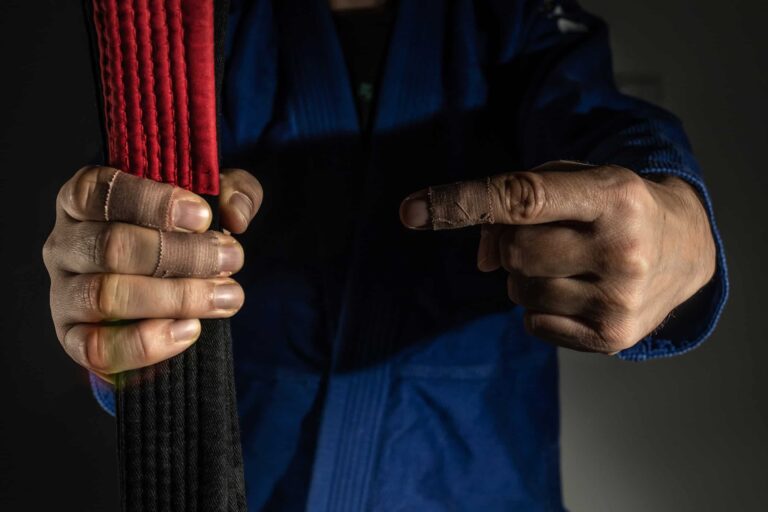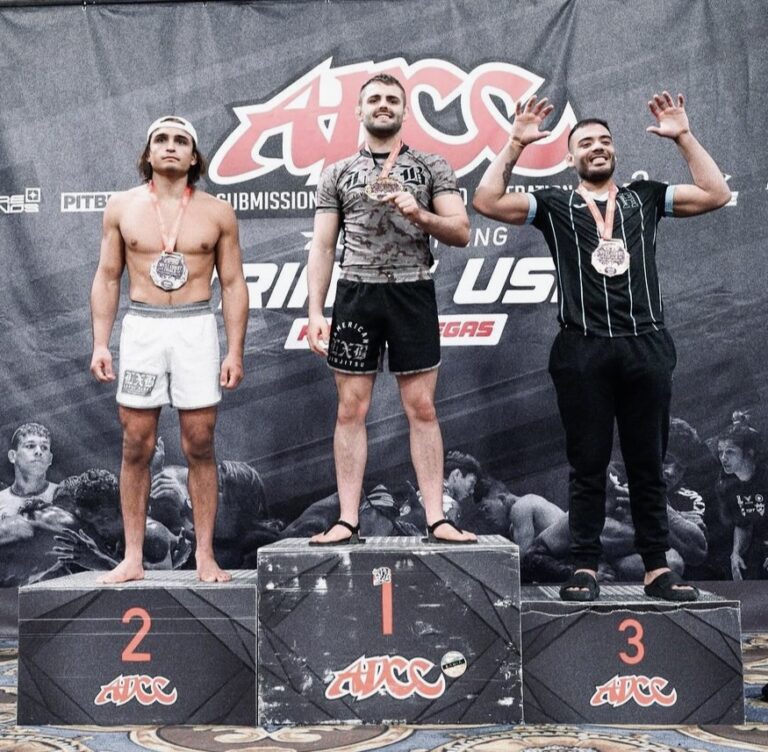Does BJJ Teach Takedowns?
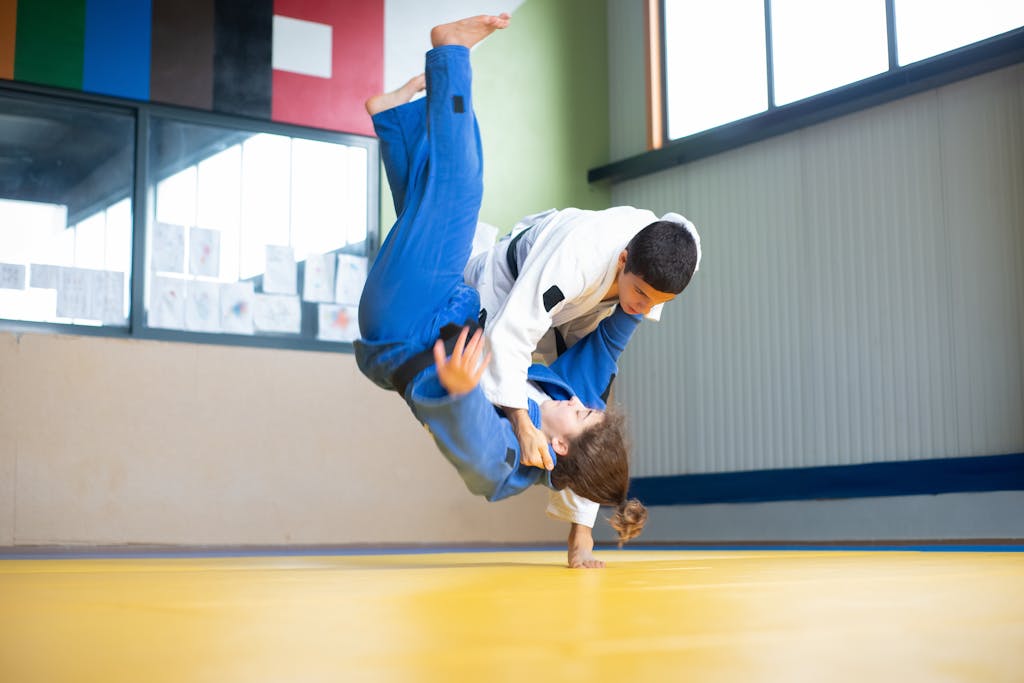
People often refer to Brazilian jiu-jitsu as a ground fighting system. Of course, if you are going to learn how to fight on the ground, you might also want to know how to get someone to the ground first.
After all, just about every fight starts on the feet. BJJ matches also start on the feet but the art is often criticized for its lack of takedowns. Of course, BJJ does teach takedowns but it is not as big of a focus as it is in judo or wrestling.
Though BJJ evolved from judo, it has evolved to put more focus on newaza ( ground technique ) than takedowns. Likewise, the sport of Judo has evolved to focus more on takedowns and less on newaza.
In the sport of Brazilian Jiu-Jitsu, you are only rewarded two points for taking your opponent to the ground. So there is some incentive to learn takedowns for BJJ competitions.
However, you can also pull guard in competition as well so many players have evolved without a great takedown game.
On the other hand, sport judo is all about takedowns. Wrestling also emphasizes takedowns as well. The goal of wrestling is to win via points or by pinning your opponent’s shoulders to the ground.
Since takedowns are awarded with points it is naturally a bigger part of the sport. In addition, pulling guard in wrestling would be purposely putting your shoulders to the mat for a pin.
Why BJJ Does Not Focus On Takedowns As Much As Judo Or Wrestling
There are many reasons why BJJ does not put as much focus on takedowns as some other grappling arts do. By watching older BJJ fighters you can tell that they practiced takedowns more than they do today. A good example would be Royce Gracie in the early UFC.
Back then there seemed to be a clear pattern to jiu-jitsu in mixed martial arts. The jiu-jitsu fighter would manage the distance from his opponent and then he would take them down, pass their guard, and then submit them.
Many of today’s BJJ schools are more focused on the sport of BJJ than MMA or self-defense. This brings us to our first reason why some jiu-jitsu schools do not put much focus on takedowns.
Takedowns Are Not Heavily Rewarded In BJJ
When you score a takedown in BJJ competition you are only awarded two points. In sport BJJ you can win your match either by points or submission. You can get points in various ways such as passing the guard or getting the mount position. Here is an example of the point system in BJJ.
- Takedowns and throws are worth 2 points
- A sweep is 2 points
- Knee on belly is 2 points
- Passing your opponent’s guard is 3 points
- The mounted position is 4 points
- The back mount with hooks is 4 points
- The back mount with knees on the ground is 4 points plus 4 more if you get your hooks in
- A body triangle from the back is 4 points
So as you can see takedowns are at the bottom of the list when it comes to points in BJJ. Perhaps takedowns should be awarded more points. But the rules are what they are and they influence the direction of the sport.
Since you can get as many points by pulling guard and then sweeping your opponent, many competitors are going to choose this route.
Space Requirements And Safety
Often there is not enough room at many academies to safely practice takedowns. If there are 4o people on the mat it is much safer to simply start on the knees than have everyone start standing up when rolling.
You are also generally more likely to get an injury from takedowns than you are from starting on the ground. This does not mean you cannot safely learn takedowns. Just that it is probably more likely, especially if many of the people are not well-trained on takedowns.
Lack Of Knowledge
Though most BJJ instructors are at least knowledgeable takedowns, it might not be the strongest aspect of their game. So naturally, they might not put as much focus on mastering takedowns in class.
That said, the sport is changing and more and more people are getting proficient at takedowns. This is especially true since so many people from a wrestling background are entering the world of Brazilian Jiu-Jitsu.
Why I Focus On Teaching My Students Takedowns
People get into BJJ and other grappling arts for different reasons. Some people want to learn self-defense and some just love the sport aspect of the art. Either way, I think everyone who does BJJ should master at least a few basic takedowns.
If you are learning BJJ for self-defense then I think it is even more important to learn takedowns. In a competition, you can always pull guard. However, in a self-defense situation, this is not a very good idea.
Not only, can someone throw punches down on you from that position, but you are also vulnerable to other people jumping into the mix. So pulling guard is not a great choice for MMA or self-defense.
You Get To Decide Where The Fight Goes
Whether you are fighting MMA or in a BJJ tournament it is always good to get to decide where the fight goes. Just because a takedown is only worth 2 points, that does not mean that those two points don’t count. A takedown could be the deciding factor on whether or not you win.
With a good takedown, you are also more likely to land in a more dominant position. Then you will be able to score even more points. Plus pulling guard is still an option for you even if you are good at takedowns.
That said if your stand-up game is better than your opponents, then you get to decide if you want to take them down or pull guard.
If you are training for MMA then takedowns are even more important. The biggest advantage great wrestlers have in MMA is the ability to keep the fight standing up or to take it to the ground. If a great wrestler is fighting a BJJ fighter, the BJJ fighter is going to have a hard time getting the wrestler to the ground.
If the BJJ fighter cannot take the wrestler down then the wrestler has taken away the BJJ fighter’s skill set.
How To Get Better At Takedowns
So what do you do if your BJJ academy does focus on takedowns? Well, one thing you could always do is find a BJJ academy that does. There are a ton of schools now that have complete wrestling classes and judo classes.
That being said, I understand that your gym might be like a second home to you. The people there might be like family to you.
If this is you then you might need to cross-train in either judo or wrestling at another martial arts studio. The only problem with this is that it can be financially hard to pay for BJJ and another martial art at the same time.
Another option would be to purchase an online program that teaches takedowns. A good takedown instructional can help you fill the gaps in your game.
Two Simple Takedowns For BJJ
There are a ton of takedowns, throws, and trips you should learn for BJJ. That said, you have to start somewhere. These three are simply some of the most effective takedowns to learn that are also not overly complicated.
#1 The Double Leg Takedown
The double leg is the most used takedown in MMA, BJJ, and wrestling. It is not only a very effective takedown, but it is also very easy to learn.
You can do this technique with or without the gi since it does not require you to get grips on a gi. For those reasons, it is one of the first takedowns I would master for BJJ.
#2 Single Leg Takedown
Another very common takedown is the single-leg takedown. There are a few ways to execute the single-leg takedown.
However, if not done correctly you could find yourself in a guillotine choke. With this single-leg variation, you will be more likely to avoid the guillotine.
Here is a video of me demonstrating how to do a single leg in BJJ.
In Conclusion
Though BJJ does teach takedowns some schools do not focus on them as much as others do. In addition, takedowns are not as emphasized as much in BJJ as it is in judo or wrestling.
You can do this either by cross-training judo and wrestling at another school or by finding a BJJ academy that focuses on takedowns.
If you can not find a place to train where you live then you might have to learn some techniques through videos or other online programs.
